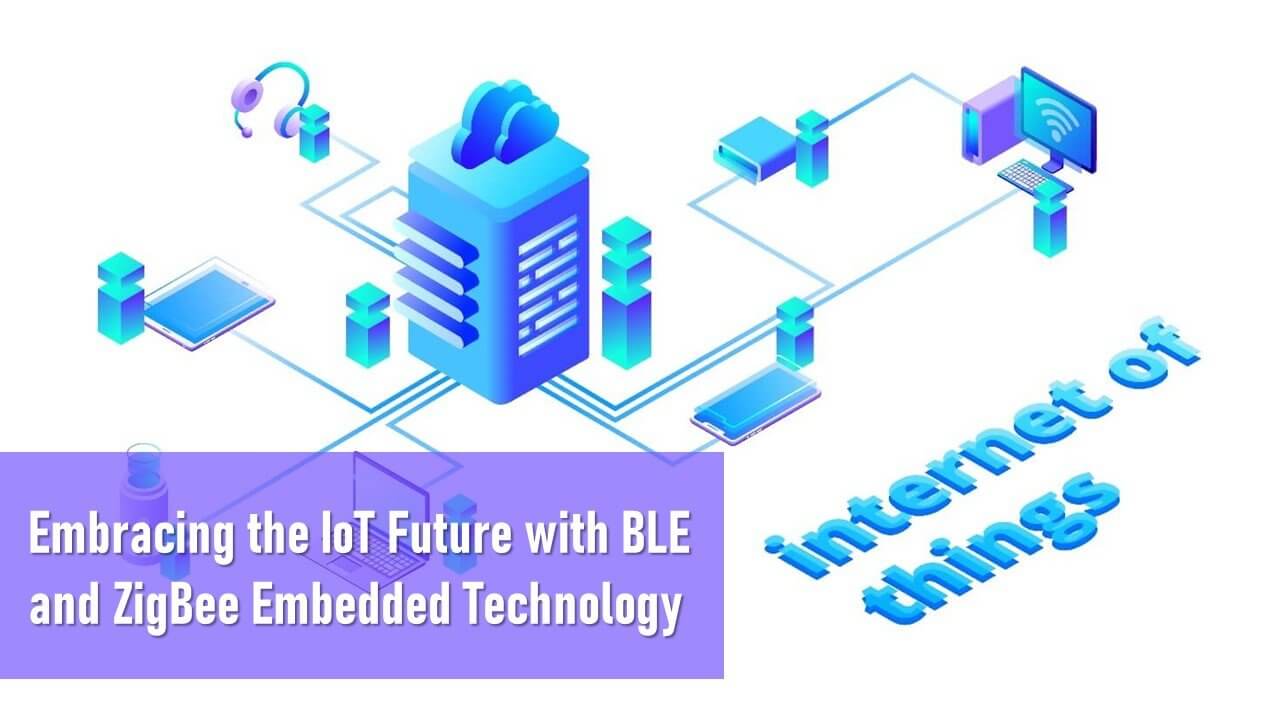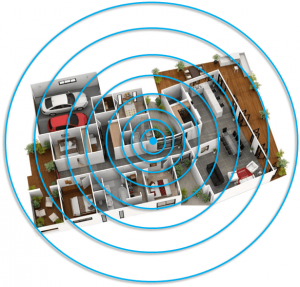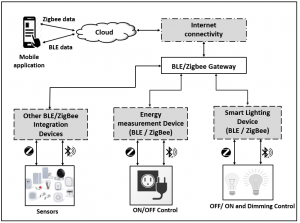iWave: Embracing the IoT Future with BLE and ZigBee Embedded Technology
We live in the best time in History-The era of the Connected World.
Using today’s technology, we can talk to our homes, our cars can drive us to our workplace, and appliances can perform self-maintenance and help conserve energy. Shopping has become fun and interactive and we enjoy effective health care services than ever before. We are basking in the comfort, convenience, and safety that today’s technology offers-enhancing our life with facilities that no generation before has enjoyed.
At the front and center of all this buzz is IoT. Management consulting company McKinsey states that globally, every second, another 127 devices are connected to the internet-indicating how widespread the technology has already become. Now, with one click, we can control just about anything from anywhere! Forgot to switch off your heater? Don’t worry. The IoT device in your home is now smart enough to take care of it – and beyond.
But, how has it become so transformative?
Thanks to the magnificent wireless technologies, and in particular short-range wireless technologies –The Bluetooth and ZigBee. Truly, these technologies are the “game changers” of connectivity and define the success of any IoT implementation. It is the basis on which we have built a whole new world of -“Connected Living”.
At iWave Systems, a leading embedded solutions provider company, we have been working on the latest technologies in Bluetooth/ZigBee – embedded hardware and software designs to enable smart innovations for IoT ahead. With proficiency in the latest embedded hardware & software architecture, we offer BLE/ZigBee designs that are optimized in power, size, and cost without compromising the performance requirements.
Bluetooth and ZigBee – Enabling secure and robust connectivity
Today, Bluetooth and ZigBee are already commonplace in most IoT applications, providing secure connectivity and enabling wireless sensor networks. The sensor network collects information from their surroundings (this could be as simple as a humidity reading or as complex as a full video feed). The collected information is then passed on to the Cloud via BLE/ZigBee Gateway to perform advanced data analytics. This processed data is then used to perform intelligent actions that make our devices ‘smart’!
An IoT Framework
Clearly, connectivity is in the spotlight in an IoT ecosystem. Today, there are a variety of technologies through which connectivity can be achieved: Cellular, Wi-Fi, Bluetooth, ZigBee, LPWA, or connecting directly to the internet via Ethernet.
With so many options at stake, how do you choose the right connectivity for your IoT application? The answer in itself is a big topic to debate on. To put in simple words, choosing which connectivity option best suits your application comes down to four main aspects: Power consumption, Range, Bandwidth and Security.
Why BLE and Zigbee stand out among other technologies for IoT?
Most IoT applications consist of an interconnected bundle of several battery-powered sensors and devices. Since they run on batteries, the power consumed need to be optimized for sustained operation.
Higher density deployments, e.g. applications for smart lighting and wireless sensor networks tune precisely to the strengths of short-range solutions such as Bluetooth and ZigBee. Often, the devices wake up with the occurrence of an event to send a small amount of data and then return to ultra-low power consumption. Connected to a gateway, the Bluetooth network can wirelessly connect several distributed devices to the local server or to the Cloud.
With edge & fog computing gaining momentum, there is a still larger scope for BLE and Zigbee connectivity in IoT applications. And now, with the introduction of BLE 5.0, the possibilities for smart IoT applications are pretty much endless.
Why BLE 5.0:
From smart homes, automobiles, smart healthcare devices, fitness apps and industrial gadgets BLE 5.0 brings a new dimension to wireless communication in IoT infrastructure. Illustrated below are the key characteristics of BLE 5.0:
2x speed:
BLE 5.0 has increased the bandwidth of data transfer to 2Mbps from 1Mbps, reducing the time required for transmitting and receiving data. This facilitates rapid and reliable OTA firmware updates for IoT devices.
4x range:
With a range of up to 200 meters, it delivers reliable connections for IoT applications, giving coverage to full-home or building.
8x broadcasting message capacity:
Larger message capacity about 255 bytes gives more bytes for actual data payload and less broadcast time. More channels for broadcast data – from 3 to 37 channels.
Improved Co-existence:
BLE technology utilizes Adaptive Frequency Hopping (AFH), which minimizes interference with other radio technologies, making Bluetooth transmission robust and reliable.
Mesh design:
A decentralized mesh network enables unlimited many to many connectivities. If two devices are too far apart, their signals can hop along with intermediate devices, hence be able to communicate with any other node in the network. Devices can be added or removed from the network without affecting the network’s overall strength.
Solid Encryption:
Communication in BLE mesh is secure with AES-CCM using 128-bit keys. All mesh messages are encrypted and authenticated and spend the same low energy as BLE processors spent before.
ZigBee
Zigbee, an IEEE 802.15.4 -based specification, is a low-data-rate, low-power and close-proximity wireless mesh network having maximum transmission distance ranging from 10 to 100 meters depending on power output and environmental conditions. ZigBee devices can transmit data over longer distances by utilizing a mesh network of intermediate devices to reach more distant connected devices.
With a defined data transfer rate of 250 kbps, ZigBee is best suited for intermittent data transmissions from simple sensors, such as wireless light switches and smart light bulbs.
ZigBee protocol features include:
- Low duty cycle – provides long battery life and low latency
- Support for multiple network topologies such as mesh networks, point-to-point, and point-to-multipoint
- Adopt Direct Sequence Spread Spectrum (DSSS)
- Up to 65,000 nodes per network
- 128-bit AES encryption for secure data connections with collision avoidance
- Provides enhanced network security with centralized security and distributed security
- Supports Mesh networking
Applications: Some IoT use cases:
- Smart health: Implanted sensors transmit vital information to patients and doctors.
- Smart city: Streetlights that collect real-time data to manage to light and save energy.
- Bluetooth Beacon in shopping malls: Helps better manage customers and promote personalized merchandise.
- Connected car: Remotely allow to check the status of a vehicle – battery, engine, sensors, etc.
- Smart home: Smart switch to control and manage devices remotely.
- Smart factory: Predictive maintenance, data analytics ensure enhanced performance and longevity of equipment.
iWave’s expertise in BLE 5.0 / Zigbee embedded technology:
- Firmware development for Zigbee/ Bluetooth low energy devices from basic drivers.
- Successfully developed many-to-many device communications using Bluetooth mesh networking.
- Energy monitoring features allow tracking energy consumption and its cost in real-time, where data is stored in the cloud using BLE/Zigbee.
- BLE / Zigbee Gateway – an IoT gateway that offers a cost-effective and secure way of connecting IoT devices.
- Real-time locating systems (RTLS) for asset tracking and indoor positioning systems (IPS) using Bluetooth beacon technology.
- Electromagnetic compatibility (EMC) for testing the functionality and performance of radio and telecommunication equipment.
- All solutions are OTA upgradable, which increases the longevity of the product.
For more information, write to mktg@iwavesystems.com




